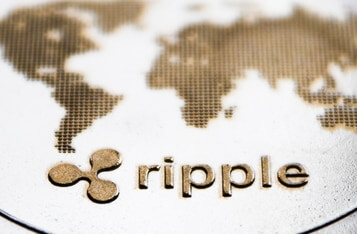
Global Payments Industry Evolution
The global payments industry is experiencing rapid changes driven by evolving consumer preferences, regulatory shifts, and technological advancements. According to Ripple, modern payment solutions, including blockchain-enabled payments, are becoming pivotal in achieving faster, more inclusive, and transparent customer experiences.
To navigate this dynamic landscape, Ripple (XRP) has published its 2023 Trends in Regional Payments eBook. This comprehensive report delves into key insights by region, including North America, Asia, Africa, Latin America, and Europe, offering valuable guidance for businesses and institutions looking to leverage innovative cross-border payment solutions.
Open Banking in North America
The financial landscape in North America is undergoing significant transformation. Technologies that enable secure data exchange, interoperability, and faster payments are contributing to a more streamlined and efficient financial ecosystem. Increased consumer demand is driving a surge in open banking adoption, with 71% of US consumers preferring to make purchases or pay bills directly from their bank accounts.
Despite this, only 34% of US consumers using open banking technology are aware of it. Regulatory frameworks and educational initiatives are lagging, hindering widespread adoption. The launch of the United States Federal Reserve’s instant payment service, FedNow, and the ISO 20022 messaging standard are expected to drive greater rollout of instant payment offerings, enhancing payment communications and processing accuracy.
Instant Payments in Asia Pacific
Asia Pacific is at the forefront of digital finance, home to 10 out of 13 of the most profitable digital-only banks globally. The region’s innovative technologies, widespread smartphone access, favorable regulatory frameworks, and customer-centric culture have made it a leader in financial innovation. QR code-based real-time payment systems in Singapore and Thailand and India’s Unified Payments Interface, which recently surpassed 10 billion transactions, exemplify the region’s appetite for experimentation and adoption.
However, challenges such as privacy and security concerns, macroeconomic volatility, and unpredictable consumer behavior could hamper the adoption of new payment rails. Collaboration between national governments and private companies to deploy solutions addressing these concerns will be crucial for continued success.
Mobile Payments in Africa
In Africa, the convergence of digital payments and mobile-first transformation is revolutionizing financial inclusion. Limited access to broader financial services due to cost barriers, lack of identifying documentation, few physical bank branches, and cash-heavy economies are driving the adoption of digital payments. The region accounts for 70% of the world’s $1 trillion mobile money value and nearly half of registered mobile money accounts.
Crypto-powered remittance payments are gaining momentum, with inbound remittance payments in Africa surpassing $100 billion last year. Despite challenges such as interoperability issues and security concerns, crypto-enabled payments are poised to enhance accessibility and affordability across the region.
Crypto in Latin America
Latin America is undergoing a digital transformation fueled by fintech investments and progressive governments. A shift away from cash, inflationary issues, and challenges with the banking system have pushed consumers toward digital payments and crypto-powered solutions. Cashless transactions are expected to grow 52% by 2025 and 48% thereafter until 2030.
High fees and low interoperability remain challenges in the region. However, regulators are working to overcome these issues and meet demand with real-time payment options. Digital banks are also playing a role in promoting digital payments through improved availability and education. Central Bank Digital Currencies (CBDCs) are becoming a tool for advancing inclusion and managing macroeconomic uncertainty.
Instant Payments in Europe
Europe is seeing increased traction in instant payments, driven by consumer and business expectations. Initiatives like the European Central Bank’s exploration of a digital euro and the UK’s Faster Payments System indicate progress toward a more resilient and innovative financial landscape. New proposals from the European Commission aim to reduce fraud, improve open banking functions, and harmonize administrative rules, stimulating innovation and competition in the financial sector.
Despite advancements, challenges remain. One in three EU payment service providers do not offer instant euro payments, and up to 70 million payment accounts in the euro area do not support instant payments. Conflicting interests and a lack of critical mass participants continue to drag on the European financial landscape. However, the region’s technological lead and digital-first approach give it a strong competitive edge.
The Future of Payments
The common themes of innovation and evolution across the global payments landscape indicate a new era of streamlined payment experiences characterized by speed, inclusivity, and transparency. Ecosystem players must embrace innovation, adapt to change, and pioneer solutions that meet the evolving needs of businesses and individuals.
For a deeper dive into global payments trends, download Ripple’s 2023 Trends in Regional Payments eBook.
Image source: Shutterstock
. . .
Tags
- SEO Powered Content & PR Distribution. Get Amplified Today.
- PlatoData.Network Vertical Generative Ai. Empower Yourself. Access Here.
- PlatoAiStream. Web3 Intelligence. Knowledge Amplified. Access Here.
- PlatoESG. Carbon, CleanTech, Energy, Environment, Solar, Waste Management. Access Here.
- PlatoHealth. Biotech and Clinical Trials Intelligence. Access Here.
- Source: https://Blockchain.News/news/ripple-2023-global-payments-report



